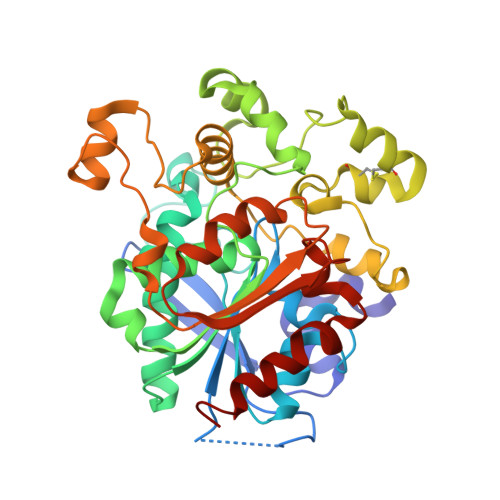Crystal structure of human gastric lipase and model of lysosomal acid lipase, two lipolytic enzymes of medical interest.
Roussel, A., Canaan, S., Egloff, M.P., Riviere, M., Dupuis, L., Verger, R., Cambillau, C.(1999) J Biol Chem 274: 16995-17002
- PubMed: 10358049
- DOI: https://doi.org/10.1074/jbc.274.24.16995
- Primary Citation of Related Structures:
1HLG - PubMed Abstract:
Fat digestion in humans requires not only the classical pancreatic lipase but also gastric lipase, which is stable and active despite the highly acidic stomach environment. We report here the structure of recombinant human gastric lipase at 3.0-A resolution, the first structure to be described within the mammalian acid lipase family. This globular enzyme (379 residues) consists of a core domain belonging to the alpha/beta hydrolase-fold family and a "cap" domain, which is analogous to that present in serine carboxypeptidases. It possesses a classical catalytic triad (Ser-153, His-353, Asp-324) and an oxyanion hole (NH groups of Gln-154 and Leu-67). Four N-glycosylation sites were identified on the electron density maps. The catalytic serine is deeply buried under a segment consisting of 30 residues, which can be defined as a lid and belonging to the cap domain. The displacement of the lid is necessary for the substrates to have access to Ser-153. A phosphonate inhibitor was positioned in the active site that clearly suggests the location of the hydrophobic substrate binding site. The lysosomal acid lipase was modeled by homology, and possible explanations for some previously reported mutations leading to the cholesterol ester storage disease are given based on the present model.
Organizational Affiliation:
Architecture et Fonction des Macromolécules Biologiques, CNRS-IFR1 UPR 9039, 31 chemin Joseph Aiguier, 13402 Marseille cedex 20, France.
















